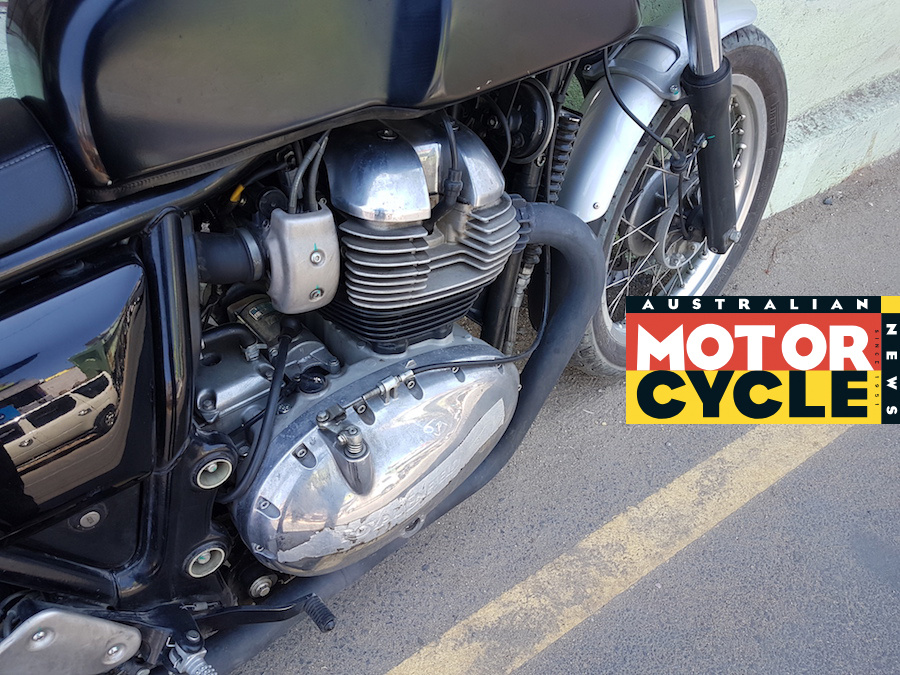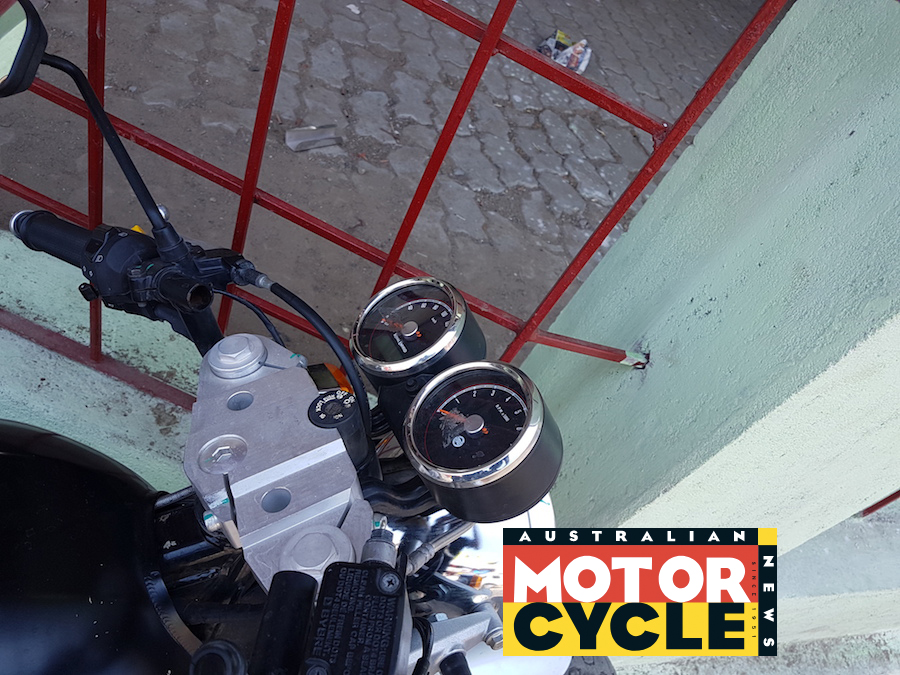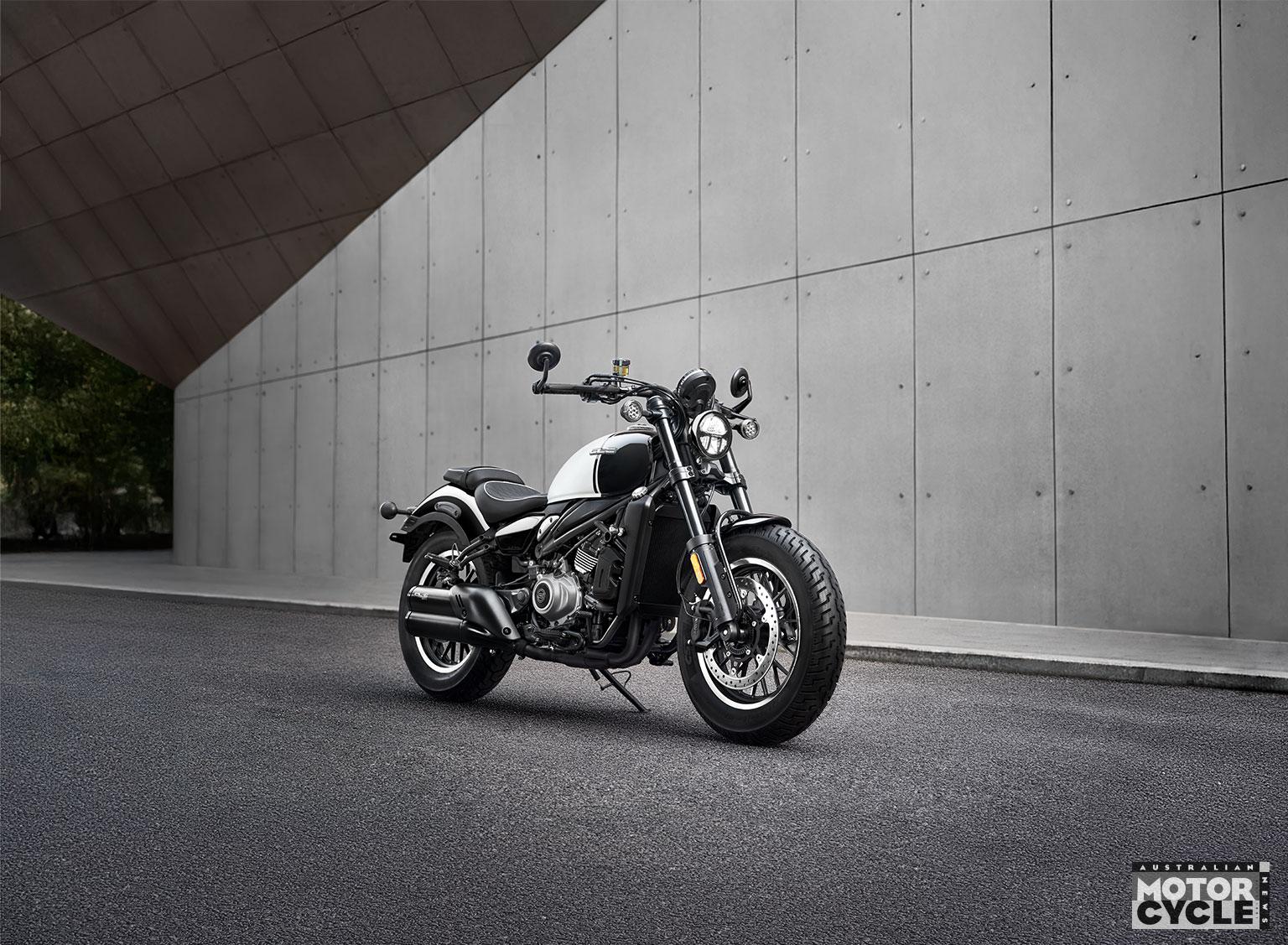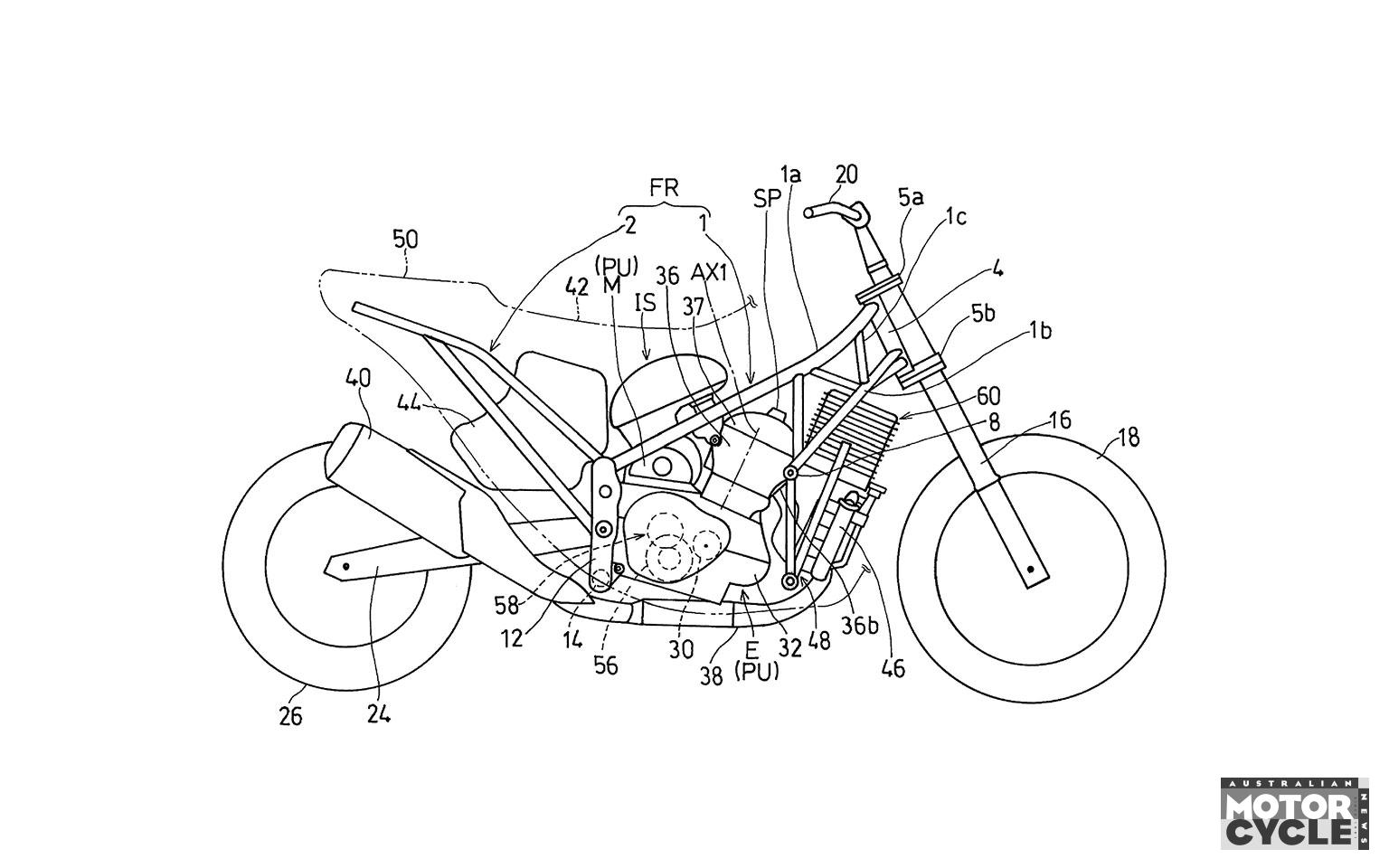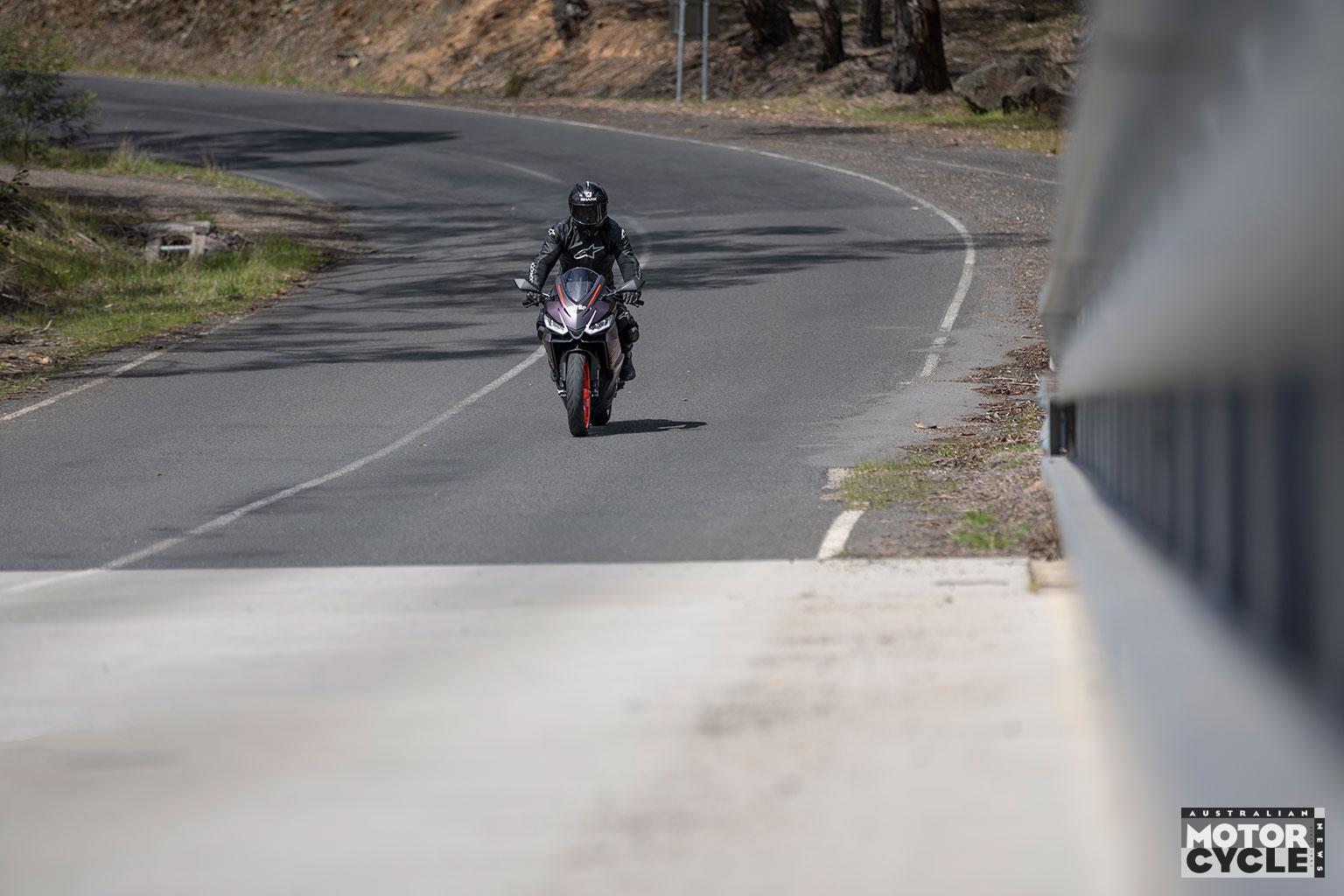While Enfield’s 750cc twin has been a long time coming, and a fairly open secret over the last couple of years, these images reveal the bike has been given a visual overhaul since it was last spied.
In terms of its appearance, the bike is clearly a close relative of the existing Royal Enfield Continental GT. But in place of the current bike’s breathless 21.4kW 535cc single it features a parallel twin that promises to elevate this bike into a new performance league.
The new engine opens up possibilities of a wide range of retro bikes; as well as the café racer, a scrambler and a roadster are also likely to appear eventually.
Sound familiar?
Triumph links aren’t coincidental. The bike’s design and development is taking place at RE’s new UK-based R&D department, located at Bruntingthorpe Proving Ground in Leicestershire, just a few miles from Triumph’s Hinckley base. Indian-owned Royal Enfield has poached dozens of engineers from Triumph to help with the bike’s development.
The frame is the work of Harris Performance, which helped develop the Continental GT and has been bought by Royal Enfield as part of its British R&D push.
Where previous spy shots showed the bike fitted with a workmanlike but uninspiring-looking parallel twin, these new images reveal the engine has been restyled.
The covers – previously fairly modern-looking – have been reshaped to have a curvy, retro look, as have the cam covers, while the cylinder head’s cooling fins are extended and rounded off to make the engine look more convincingly like a 1950s or 60s design.
Unlike the latest Bonneville motors, which have a similarly old-fashioned external appearance but are actually water-cooled, the Enfield twin is oil- and air-cooled, with a large oil cooler between the exhaust headers. It’s fuel injected and should meet the latest Euro 4 emissions rules.
The fork and single front disc brake appear to be off the Continental GT. Piggyback-reservoir shocks at the back are probably from Paioli, which supplies similar units for the GT.
By BEN PURVIS
